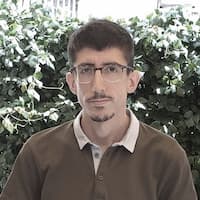📆 Tuesday, March 5, 2024
🕐 11 am ─ 1 pm CET
📍 OCZ Conference Room, C1 Building, UPC Campus Nord, Barcelona + 💻 Online
ABSTRACT
Modern composite materials, primarily based on the union of polymeric matrices and fibers of glass, carbon or any other fiber of remarkable rigidity, have paved the way for the design and manufacture of lightweight structures that are at the same time extremely stiff and resistant. The very nature of these composite materials and their manufacturing methods have increased the complexity of both the shapes and the designs of the manufactured structures, giving rise to sophisticated laminates joined by transitions with the presence of reinforcements or lightweights. Numerical computational methods, most notably the finite element method, play a key role in the contemporary design and development of this state-of-the-art engineering composite structures.
Over the past fifty years, these methods have evolved exponentially alongside computational power. However, the increased complexity of computations stemming from reproducing such materials' behaviors and discretizing their geometries among others, necessitates of a continuous effort to reduce and optimize their computational costs.The discretization of these geometries and the resulting mesh have a direct impact on the computational cost, particularly pronounced in the analysis of slender structures such as beams and shells characteristic of composite materials, where the discretization demands a large number of finite elements in order to capture the stress distribution variations taking place through the laminates. All together further accentuates the need for analytical methodologies that balance computational efficiency and accuracy.To address this challenge, multiple kinematic models have been proposed over time that parameterize the kinematics of a regular beam or laminate with a reduced number of variables, concentrating all the discretization to simple lines or surfaces respectively. However, they are not able to predict the behavior when the laminate loses its regularity, i.e. at and around discontinuities, regions which are usually more critical and therefore of more interest.
In, this context, this work explores two methodologies, the second-order multiscale analysis for beam and shell models and the kinematic coupling between models based on the work equilibrium, once presented, it adapts them to irregular beams and laminate areas. For the former, a homogenization process is proposed to characterize, at the constitutive level, the stiffness of irregular regions within the laminate by defining a set of boundary conditions. Regarding the kinematic coupling, it is adapted to layered laminar models, typical of composite structures, thus allowing the use of the most cost-effective model in each region of the structure. The coupling is then used to develop reduced order models compatible with beam and shell elements capable of capturing the stiffness of both regular and irregular regions.This work concludes by acknowledging the potential for further improvement and innovation in these approaches, especially concerning the study of composite structures in regions with discontinuities not easily addressed by conventional shell or beam models.
Committee
- President: Dr. Javier Bonet Carbonell
- Secretary: Dr. Albert Turon Travesa
- Member: Dr. Bas Tijs
- PhD advisors: Dr. Xavier Martinez Garcia and Dr. Fermín Otero Gruer
PHD CANDIDATE
 Francesc Turón is a Master in Naval and Oceanic Engineering from the Universitat Politècnica de Catalunya (UPC) with a specialization in Ocean Energy (2019), and currently as Ph.D. student in the Structural Analysis RTD group at CIMNE. His research area is focused on the analysis of large composite structures, either using multi-scale techniques or defining reduced-order models that are compatible with conventional shell-like models. His professional activity has been developed at CIMNE, where he is a researcher since 2019, and at the Facultat de Nàutica de Barcelona (FNB), where he is an assistant professor since 2021. As a researcher at CIMNE, he has participated in several projects funded by the European Union, such as FIBERSHIP, ECO-Compass, ACASIAS, Fibre4yards and Fibergy, all of which have in common research in the field of composite materials.
Francesc Turón is a Master in Naval and Oceanic Engineering from the Universitat Politècnica de Catalunya (UPC) with a specialization in Ocean Energy (2019), and currently as Ph.D. student in the Structural Analysis RTD group at CIMNE. His research area is focused on the analysis of large composite structures, either using multi-scale techniques or defining reduced-order models that are compatible with conventional shell-like models. His professional activity has been developed at CIMNE, where he is a researcher since 2019, and at the Facultat de Nàutica de Barcelona (FNB), where he is an assistant professor since 2021. As a researcher at CIMNE, he has participated in several projects funded by the European Union, such as FIBERSHIP, ECO-Compass, ACASIAS, Fibre4yards and Fibergy, all of which have in common research in the field of composite materials.





